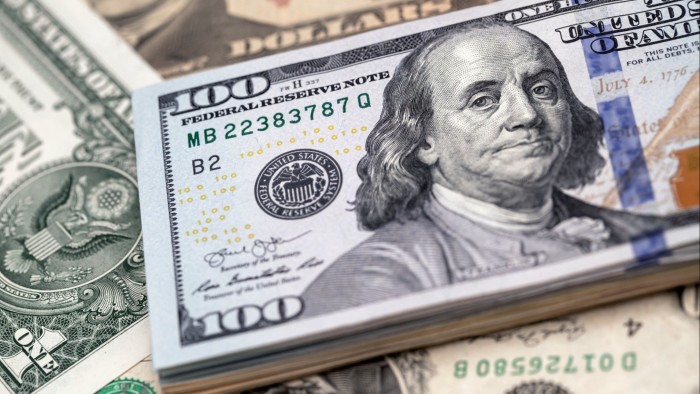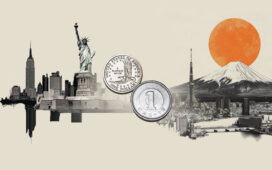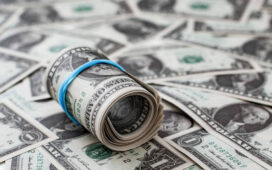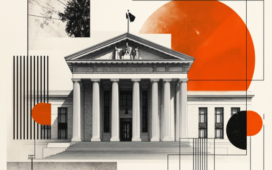Unlock the Editor’s Digest for free
Roula Khalaf, Editor of the FT, selects her favourite stories in this weekly newsletter.
The bet against the dollar is showing early signs of turning, setting up yet another curveball in global markets for 2025.
This year, the swoon in the US currency has been one of the more notable reactions to the chaos unleashed by Donald Trump’s global trade tariffs. Instead of springing higher, as the dollar usually does in times of stress, it dropped hard, extending declines that started earlier in his second term. This made the first half of 2025 the worst start to any year for the currency in more than half a century — a massive thumbs down from global markets to the president’s adventures in geopolitics and global trade.
That thumbs down sparked a historic torrent of currency trading. The Bank for International Settlements’ triennial survey of the foreign exchange market just happened to perform its analysis in April, during the wildest part of the storm. Last month, the BIS revealed that an average of nearly $10tn changed hands in the currency markets every day over that period — up by nearly a third compared with the same month three years ago.
That stampede out of the dollar mattered then and it still matters now. It was a warning sign that the currency’s status as a safety valve for the financial system is under pressure and a reflection of an unprecedented urge among stock and bond investors to shield themselves from risks in what is supposed to be one of the least risky currencies on earth.
Since late April, however, the dollar has gone the best part of nowhere. If anything, over the past month, it has turned higher. The DXY dollar index, which tracks its value against a basket of other currencies, has gained a modest 3 per cent since early September. Now, analysts and investors are cautiously asking themselves whether the lows are behind us.
Steve Englander, head of currencies research at Standard Chartered, has been making this case in analysis that he says “makes jaws drop”.
“We see a path by which dollar exceptionalism can be maintained through rapid productivity and profits growth, and consequent strong capital inflows,” he wrote in a note to clients.
“We see tantalising, but tentative, evidence that trend productivity growth is rising,” he added. If that holds, it “could be a precursor to a surprising rebound in the dollar”. If he is right, an awful lot of investors will have a lot of catching up to do.
Deep analysis of productivity growth is one thing, but another underrated factor here is the dirtiest shirt dynamic in currency trading. Sure, the US, and therefore the dollar, has its problems. But other currencies are not exactly a screaming buy at this point, making the buck look like a decent fit.
The Japanese yen has taken a big hit since the selection of a new prime-minister-in-waiting, Sanae Takaichi. Analysts at Deutsche Bank noted just around three weeks ago that they were positive on the yen, but in recent days they said they were now getting out. “Sanae Takaichi’s surprise victory reintroduces too much uncertainty around Japan’s policy priorities and the timing of the Bank of Japan hiking cycle,” they said.
In Europe, meanwhile, France’s political circus continues, and while it is not rumbling the country’s government bonds too badly (investors know full well the European Central Bank would put out any serious fires), the whole thing has hit French stocks and put a lid on what has been a great run for the euro this year. Sterling cannot do much beyond treading water ahead of the Budget next month — a high-stakes event that, if all goes well, will prove to be a snooze-fest in markets.
In a note this week, Goldman Sachs pointed out that its measure of speculative flows in the dollar — often a leader for other types of trades — has shown a markedly more positive tone of late. “An outsized increase in bullish dollar positioning” has helped propel the currency to its highest point in two months, the bank said, driven particularly by an aversion among speculators to the yen and the euro.
The economic picture is also important here, particularly in relation to the creeping suspicion that tariff-driven inflation is not dead but just dormant. If it were to rear its ugly head towards the end of this year and the start of next, it would become very tricky even for a heavily Trump-influenced Federal Reserve to deliver the bumper run of interest rate cuts that market participants have been expecting.
All things being equal, that sets the scene for the dollar to at least hold steady, and possibly even push higher.
As investors know well, predicting the path of currencies is a fool’s errand. The wide range of variables on each side of each trade makes this a fiendishly difficult task, and accuracy is often the result of dumb luck. A persistently creaky US jobs market would go a long way to limiting any upswing.
For now, the US currency is still 9 per cent weaker than it was at the start of this year. If it stays at this level to the end of the year, it would be the biggest annual fall since 2017. But if this autumnal pick-up gathers momentum, it could trigger a scramble to reset portfolios and produce a bracingly rapid ascent.




